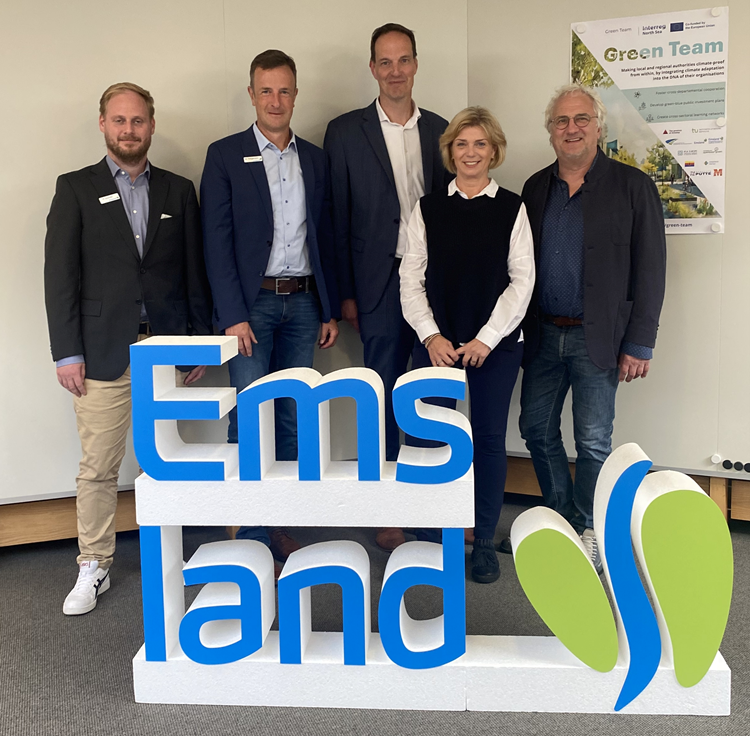The German district of Emsland considers climate adaptation as a multilevel task. Using the Green Team method, the district wants to broaden its scope. Two successful kick-off workshops have already been hosted with the help of the Technische Universistät Dortmund, bringing together 37 colleagues. Moreover, the district council has given its further approval. Learn more about their journey below.
Written by Walter Pengemann, Stefanie Bund and Jürgen Schultze
The district of Emsland in north-western Germany extends over 2,880 km². This makes it the largest district in Lower Saxony in terms of area and one of the largest in the Federal Republic of Germany. The north-south extension is 95 km, the east-west extension 56 km. To the west, Emsland shares a 60 km border with the Netherlands, with which it has numerous economic and cultural connections. Despite its peripheral location in the border region, Emsland has established itself as an economically dynamic and strong region. Additionally, the rivers Ems and Hase, along with large forests and moors, characterize Emsland as a unique natural landscape. As an administration, the district of Emsland has an important coordinating role for its 19 towns and municipalities, including in the areas of climate protection and climate adaptation.
Climate adaptation is a multilevel task. There are already numerous activities and measures for climate adaptation in the district of Emsland, particularly in water quantity management (Emslandplan 2.0 project or ELMIS for recording moorland areas and planning for rewetting). The Green Team approach supports cooperation within the administration and continuity. The topic of climate adaptation is considered in an integrated manner and worked on jointly within the administration. The aim is to strengthen cooperation and networking and to develop short, medium and long-term measures in an integrated manner. This approach contributes to the implementation of overarching strategies.
Thanks to the cooperation of the Green Team in the district of Emsland, it has already been possible to define subject areas in which specific climate adaptation measures are to be developed. In the two kick-off workshops in the district of Emsland, 37 employees from different departments of the administration took part. A need for action was identified in the areas of heat & health and disaster prevention & water. Good measures for long-term implementation have already been jointly developed here. However, it is also important to develop and implement ideas that can be implemented quickly. For example, for the district of Emsland include info-banners on heat prevention, participation in the refill campaign refill your bottle with water free of charge or skin screening offer for employees as part of a health week.
The environmental committee of the district council has deemed the Green Team project to be very valuable for the region of Emsland and supports Green Team by providing human resources. It is important for the local politicians to identify opportunities and design measures. And this is precisely where the politicians see the added value of the project and expect new ideas in addition to the existing approaches. Read more about it here.

Green Team project receives broad political support in Landkreis Emsland
The long-term goal will be to create a climate adaptation concept for the district of Emsland. The process for creating this will be supplemented by the roadmap method and implemented systematically. This means that the measures will focus on the selected topic areas, be formulated in concrete terms (short, medium and long-term) and be feasible, and clear responsibilities will be defined.
